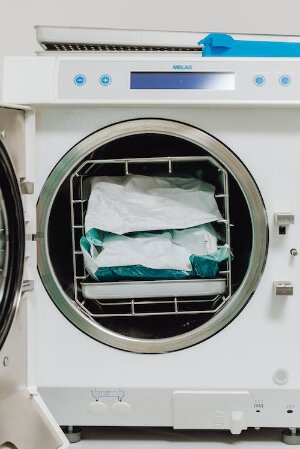Tech-Infused Transformations: Revolutionizing Interior Design Services for a Seamless Space Makeover
Introduction
Technology continually shapes our daily lives, the realm of interior design is experiencing a transformative wave like never before. Tech-infused transformations are revolutionizing how interior design services are conceptualized, executed, and experienced. Let’s dive into the fusion of technology and interior design, exploring the profound impact that transform your space seamlessly.
The Role of Technology in Interior Design
Virtual Reality (VR) and Augmented Reality (AR)
Virtual and augmented realities are not just buzzwords; they are the game-changers in the interior design landscape. Imagine clients being able to virtually walk through their redesigned spaces before the actual work begins, providing an immersive experience that goes beyond traditional sketches.
Artificial Intelligence (AI) Applications
AI is not just about automating tasks; it’s about personalized design solutions. From predicting design preferences based on user behavior to generating real-time recommendations, AI applications are adding a touch of sophistication to interior design.
3D Printing in Furniture Design
The era of mass-produced furniture is making way for personalized 3D-printed masterpieces. Designers can now craft unique, intricate furniture pieces that perfectly align with their client’s tastes, creating not just functional pieces but works of art.
Benefits of Tech-Infused Interior Design Services
Enhanced Visualization for Clients
Tech-infused designs provide clients with a visual feast. The ability to virtually “walk through” a proposed space ensures that expectations align with reality, minimizing surprises and maximizing satisfaction.
Streamlined Design Process
Time is of the essence, and technology ensures that every second counts. With streamlined design processes, tasks that used to take weeks can now be accomplished in days, allowing for quicker project turnarounds without compromising quality.
Sustainable and Customizable Solutions
Sustainability is at the forefront of design trends. Tech allows designers to explore environmentally friendly materials and practices, creating spaces that are not just aesthetically pleasing but also ethically sound.
Popular Tech Tools in Interior Design
RoomSketcher for Virtual Room Planning
RoomSketcher allows designers to create detailed floor plans and 3D visualizations, enabling clients to see the potential of their spaces in real-time. It’s a virtual playground for experimenting with various design elements.
Houzz for Inspiration and Product Sourcing
Houzz is a treasure trove of inspiration, connecting designers with a vast network of suppliers. From finding the perfect color palette to sourcing unique furniture pieces, it streamlines the entire design process.
Smart Furniture: IoT Integration
Smart furniture, seamlessly integrated with the Internet of Things (IoT), brings functionality to a whole new level. Imagine furniture that adjusts its settings based on your habits or lighting that adapts to your mood—this is the future of interior design.
Case Studies: Successful Tech-Infused Transformations
Before and After Stories
Nothing tells a story better than a visual transformation. Dive into real-life case studies showcasing spaces before and after tech-infused makeovers, demonstrating the power of combining design expertise with cutting-edge technology.
Client Testimonials
Client testimonials provide insights into the client experience. Discover how tech-infused designs have not only met but exceeded the expectations of clients, creating living and working spaces that are truly personalized and exceptional.
Overcoming Challenges in Tech-Infused Interior Design
Technological Barriers
While technology brings tremendous benefits, it also presents challenges. Explore how designers overcome technological barriers, ensuring a seamless integration of tech into the design process.
Designing for Real-Life Spaces
Designing for a screen is one thing; designing for real-life spaces is another. Address the challenges designers face when translating virtual designs into tangible, functional spaces.
Cost Considerations
The integration of technology comes at a cost. Delve into how designers navigate the financial aspect, ensuring that tech-infused designs are not only innovative but also feasible within budget constraints.
Future Trends in Tech-Infused Interior Design
Integration of Artificial Intelligence
The future holds even more possibilities with AI. Explore how AI will play a pivotal role in predicting design trends, understanding user preferences, and even creating designs autonomously.
Sustainable Tech Solutions
As sustainability becomes a non-negotiable factor, discover how technology will contribute to creating eco-friendly spaces. From smart energy management to sustainable materials, the future of design is green.
Personalized Virtual Design Assistants
Imagine having a virtual design assistant that understands your taste, sifts through endless options, and presents you with personalized design suggestions. The future promises virtual design assistants that enhance the client-designer collaboration.
How to Incorporate Tech in Your Interior Design Project
Choosing the Right Tech Tools
Not all tech tools are created equal. Learn how to navigate the plethora of options and choose the right tech tools that align with your design style and project requirements.
Collaborating with Tech-Savvy Designers
Tech-savvy designers are the trailblazers in this evolving landscape. Discover the benefits of collaborating with designers who have a keen understanding of the latest technologies, ensuring a seamless integration into your project.
Understanding Client Preferences
Tech is a means to an end, and that end is client satisfaction. Uncover the art of understanding and incorporating client preferences into tech-infused designs, ensuring that technology enhances rather than overshadows the personal touch.
Transforming Residential Spaces
Smart Home Integration
The concept of smart homes is no longer a futuristic dream. Explore how tech-infused interior design is transforming residential spaces, from intelligent lighting systems to fully integrated smart home setups.
Energy-Efficient Design Solutions
Sustainability meets efficiency in the realm of energy-efficient design. Dive into how tech is being utilized to create spaces that not only look good but also function with minimal environmental impact.
Privacy and Security Concerns
As homes become smarter, concerns about privacy and security arise. Address the potential pitfalls and how designers are navigating the delicate balance between technology and privacy.
The Impact on Commercial Spaces
Tech-Driven Office Designs
The traditional office space is evolving with technology at its core. Explore how tech-driven office designs are enhancing productivity, collaboration, and employee well-being.
Retail Spaces with Virtual Try-Ons
In the retail sector, virtual try-ons are changing the game. From trying out furniture placements to virtually “wearing” decor, discover how tech is revolutionizing the retail interior design experience.
Hospitality Industry Innovations
Hotels and restaurants are embracing tech-infused designs to elevate the guest experience. Explore how technology is creating memorable and immersive spaces within the hospitality industry.
Realizing a Seamless Space Makeover
Collaborative Design Approach
The magic happens when technology and human expertise collaborate seamlessly. Uncover how a collaborative design approach ensures that tech-infused transformations are not just efficient but also reflect the unique essence of each project.
Balancing Tech and Traditional Elements
In the pursuit of innovation, it’s essential to maintain a balance. Explore how designers strike the perfect equilibrium between cutting-edge technology and timeless design elements.
Staying Ahead of Trends
In a rapidly evolving field, staying ahead is the key to success. Discover how designers and tech enthusiasts stay updated on the latest trends, ensuring that each project remains on the cutting edge.
Success Stories from Renowned Interior Designers
Interviews and Insights
Step into the minds of renowned interior designers who have successfully navigated the tech-infused landscape. Gain insights from their experiences, challenges, and triumphs.
Lessons Learned and Key Takeaways
Every success story comes with lessons. Uncover the key takeaways from the journeys of successful interior designers, providing valuable insights for aspiring professionals.
Learn more about technology and house renovations through this article: Advantages of Technology in the Kitchen
Conclusion
In conclusion, the marriage of technology and interior design is not just a trend; it’s a revolution. From enhancing visualization to creating sustainable and personalized spaces, tech-infused transformations are reshaping the very essence of interior design services. As we navigate the future, one thing is certain—seamless space makeovers are no longer a distant dream but a tangible reality.




